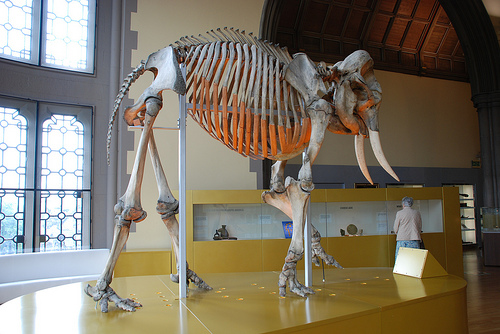The Hunterian Museum
John Hunter (1728-1793) was a surgeon and an anatomist and from whom the museum takes its name. The name the name is not instantly recognisable, nor does it give any clue as to what the building contains. But, if you knew what lurked behind its doors, well…

If you are one of the many who are attracted to the bizarre, the gruesome and the downright strange you will find a lot of exhibits in the Huntarian Museum to be of interest. The museum is in fact one of the UK’s oldest collections of pathological, anatomical and zoological specimens, all based around the collection started by John Hunter. There are over 3,500 different fossils, skeletons, medical instruments and works of art in the collection. The eclectic mix of exhibits also includes the skeleton of the ‘Irish Giant’, Charles Byrne which measures 7’ 7” and has been the subject of recent medial and anthropological debate.
Medical History
The collection belongs to the Royal College of Surgeons and offers some insight into the history of medicine and how it developed within this great old city of London. Pieces of original pioneering medical equipment can be found such as seventeenth century surgical tools and a pioneering carbolic spay used by Joseph Lister; the very beginning of antiseptics in the surgical environment, and a pivotal point in the history of medicine.
The collection also includes items donated from Edward Jenner the doctor who developed the smallpox vaccination that saved millions of lives, generally regarded as the father of immunology. Other exhibits include donations from Sir Joseph Banks one of the scientists on the Endeavour with Captain James Cook. Charles Darwin himself donated the tooth of a ‘Megatherium’ (a Giant Sloth) and Winston Churchill, along a similar vein, donated his dentures.
Exhibitions
There are a number of different themes exhibitions within the museum; some will chart the development of surgery from the gruesome days of the barber-surgeons to today’s state of the art surgical tools. Others may look at how the understanding of human anatomy developed, from the first charted drawings of the 1640’s to the modern computer generated 3D diagnostic tools. Things here are not only about medicine though in an exhibition entitled simply ‘Extinct’ there are both images and specimens of a whole range of both long extinct and recently extinct creatures like the woolly mammoth and the Tasmanian Tiger. The exhibits are also home to remains of one of the most terrifying creatures that even swam the world’s oceans, the prehistoric megalodon shark.
Entry to the museum is free to everybody and there is no charge for entry into any of the exhibitions either. Past visitors have used words like ‘freaky’, ‘spooky’ and ‘mind boggling’ to describe the range of artefacts on display here. However it makes you think about the current range of exhibits on display and you will leave the Hunterian feeling very thankful that medicine, and in particular surgery has moved on from the barbarous days of the bask street surgeon and his dirty and rusty tools.

